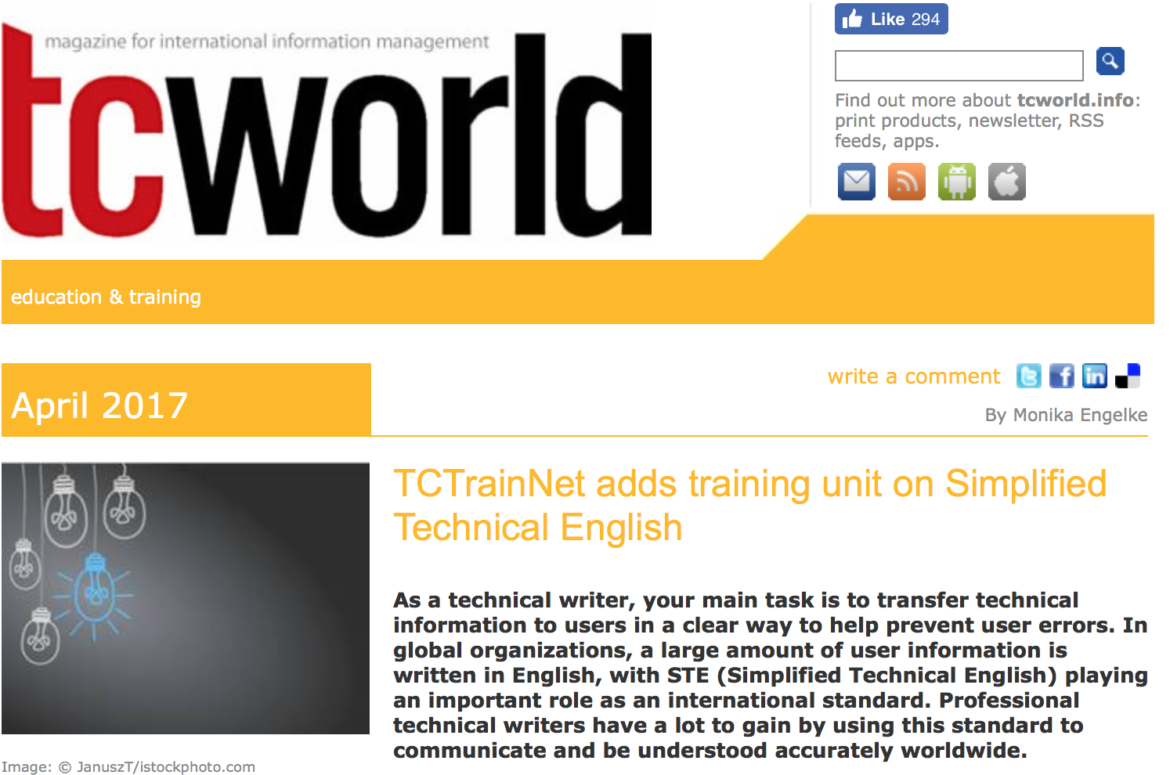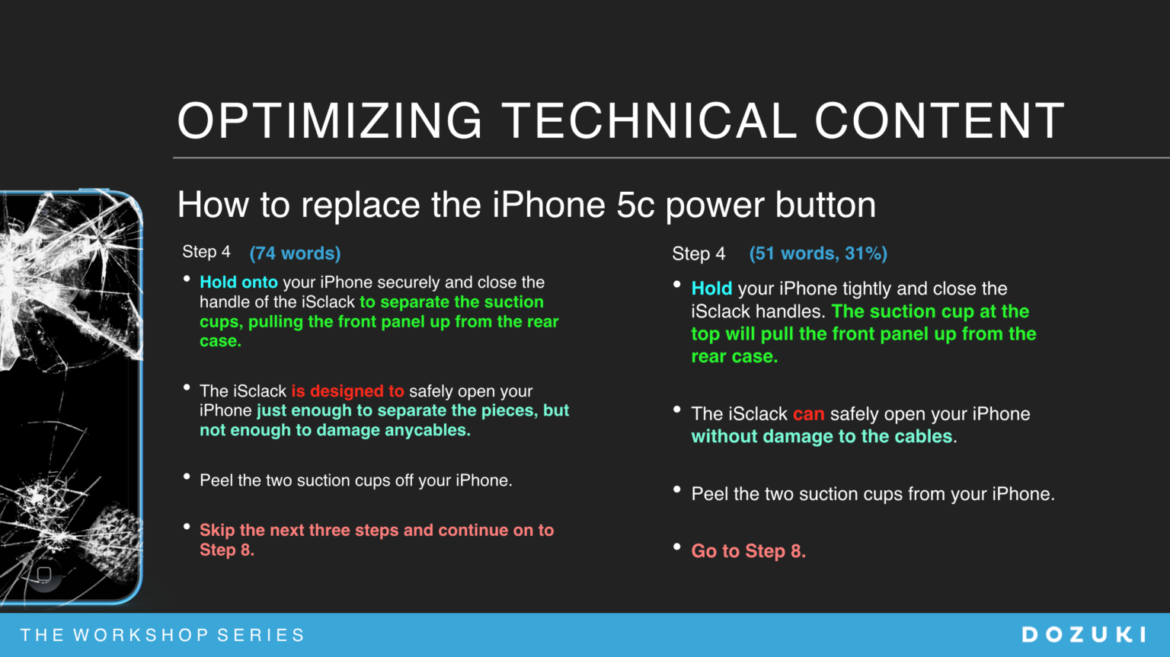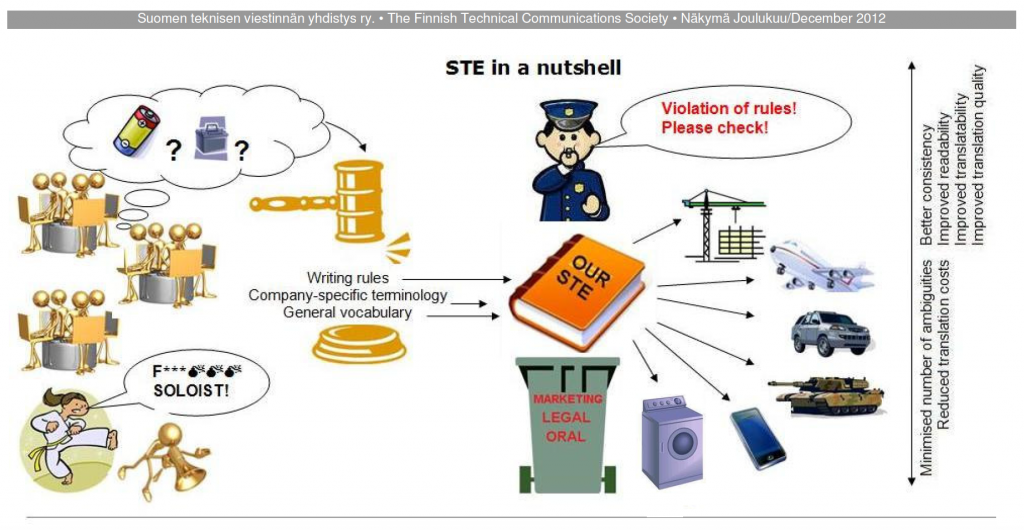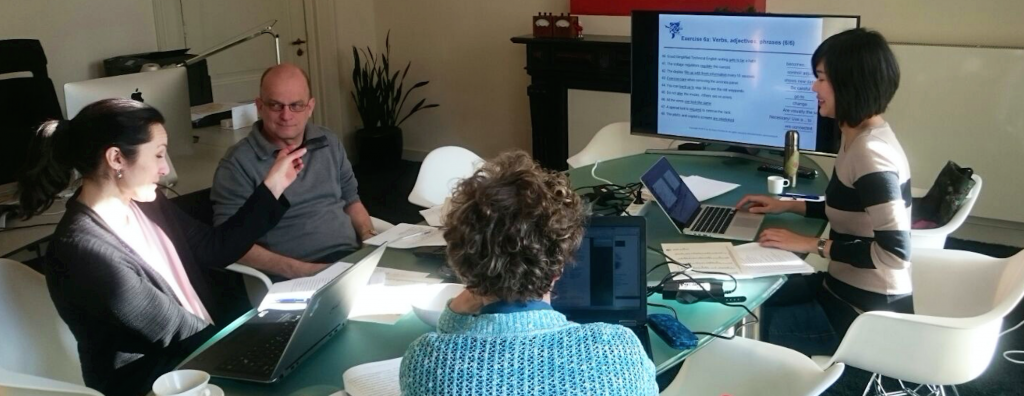Your content matters
To follow-up with the audience on the webinar session on 26 July 2016, we will share in more detail some examples of how you can prepare your content for optimum re-use, readability, and translatability.
In the three-part text analysis that follows, we will highlight areas for improvement, then provide the same information based on Simplified Technical English (STE) writing rules.

RULE: 1.2 Use approved words from the Dictionary only as the part of speech given.
1a) Standard English:
If your display is cracked, keep further breakage contained and prevent bodily harm during your repair by taping the glass.
1b) STE:
If there are cracks in your display glass, use tape to prevent more damage and possible injuries.
Analysis:
‘Crack’ is only approved as an STE technical noun, not a verb. For this reason, we changed the past participle form ‘cracked’ to ‘cracks’.
It is also not advisable to use fake verbs or a passive construction such as ‘by taping’ in your sentence. This is a violation of rule 1.2 where ‘tape’ is used only as a noun, and also hides the doer of the action. Instead, write ‘use tape to prevent more damage..’ to sound more direct.
We also removed unnecessary phrasings like ‘keep further breakage contained’ and ‘bodily harm’, substituting them with the simple verb ‘to prevent’, and unambiguous words such as ‘more damage’ to the equipment, and ‘possible injuries’ to the user for a more concise sentence construction.
RULE: 1.6 Use a Technical Name only as a noun, not as a verb.
2a) Standard English:
Lay overlapping strips of clear packing tape over the iPhone’s display until the whole face is covered.
2b) STE:
Make a cover for the full display glass area with overlapping strips of clear tape.
Analysis:
‘Cover’ is a non-approved verb in STE. Instead, use ‘cover’ as a technical noun. In this sentence pair above, we removed redundant words like ‘lay’, ‘over’, and ‘until’. The result is a concise, more direct sentence for the reader to complete his task more quickly and efficiently.
RULE: 1.3 Keep to the approved meaning of a word in the Dictionary. Do not use the word with any other meaning.
3a) Standard English:
This will keep glass shards contained and provide structural integrity when prying and lifting the display.
3b) STE:
This will keep glass shards together and give structural integrity when you move the display.
Analysis:
The STE verb ‘contain’ is defined as to have in something or to hold in something. The approved STE adverb ‘together’ appears simpler in meaning and more accurately describes the situation.
‘Provide’ as an unapproved STE verb is replaced with ‘give’, a shorter and more direct alternative.
‘Prying’ and ‘lifting’ can easily be described as ‘to move’. We hardly need to go into detail yet about prying and lifting as we risk confusing the reader at this point in time. Also, the –ing form or present participle verb form is not used in STE unless it is part of a technical name. For instance: lighting, missing, servicing.
RULE: 1.3 Keep to the approved meaning of a word in the Dictionary. Do not use the word with any other meaning.
4a) Standard English:
Wear safety glasses to protect your eyes from any glass shaken free during the repair.
4b) STE:
Use safety glasses for eye protection during the repair.
Analysis:
‘Wear’ is defined as the action of becoming damaged as a result of friction. For other possibly valid meanings of ‘wear’, STE prefers the verbs ‘use’ or ‘put on’ safety glasses.
Further reading: Dozuki Workshop Series – Optimize your technical content (Part 2 of 3)
Missed this session? The on-demand presentation is now available below.

















